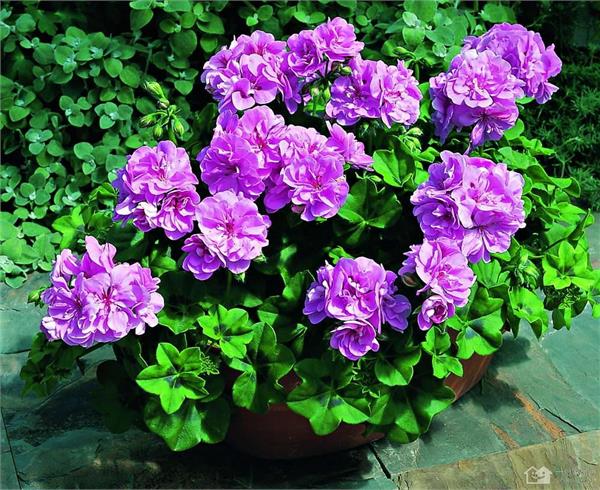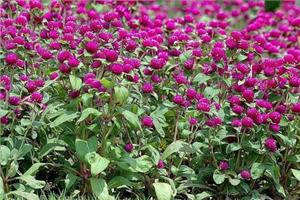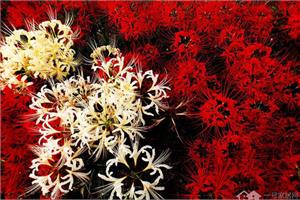Ecological habits of geranium how to cultivate geranium
Geranium, also known as Hydrangea, Hydrangea, is a perennial evergreen herb or subshrub woody flower. Native to southern Africa, it is widely cultivated all over the world. Pelargonium has a long flowering period, strong adaptability to the environment, plant size suitable for family potted plants, easy to reproduce, very popular, is one of the common potted flowers in families, and is also a common flower in flower beds in warm areas in winter. The small flowers of geranium are reunited, and the large inflorescences are shaped like hydrangeas with bright colors. Can be used for interior decoration, can also be arranged in spring flower beds and venues, the following is a detailed introduction to the breeding methods of geraniums.

1. Ecological habits of geraniums
Geraniums are native to southern Africa. Like warm, moist and sunny environment. Poor cold resistance, afraid of dampness and high temperature. The suitable temperature for growth is 3 ℃ from September to 13 ℃ from September to September, and the winter temperature is 10 Murray 12 ℃. It is semi-dormant from June to July, so watering should be strictly controlled. Suitable for fertile, loose and well-drained sandy loam. The winter temperature is not lower than 10 ℃ and can withstand 5 ℃ low temperature in a short time. Single petal varieties need artificial pollination in order to improve the seed setting rate. After anthesis, the seed matured for about 40 MULTH 50 days.
The geranium likes to be warm in winter and cool in summer. It can blossom normally when the indoor temperature is kept at 15 ℃ in winter and the temperature is above 8 ℃ at night. But the optimum temperature is 15 ℃ and 20 min. Geraniums like dryness and hate dampness, and should not be watered too much in winter. See dry and wet. When the soil is wet, the stem is tender, which is not conducive to the sprouting and opening of flower branches; long-term excessive humidity will cause plants to grow too long, flower branches will move up, and the leaves will gradually yellow and fall off. Geraniums need plenty of sunlight for a long time, so they must be placed in the sun in winter. Lack of light, long stems and leaves, soft pedicels and poor inflorescence; buds in low light often bloom poorly and wither ahead of time. Geraniums do not like big fertilizer, too much fertilizer will make geraniums grow too prosperous and not conducive to flowering. In order to bloom luxuriantly, the normal flowering can be promoted by watering once a thin book fertilizer water (rotten bean cake water) every 2 weeks (rotten bean cake water) and 800 times potassium dihydrogen phosphate solution every 7 murmurs for 10 days. Cutting off the abortive flower stem in time after flowering can increase the light between plants, induce the germination of new leaves, and extract new flower stems to prune and pick the heart in order to promote the more branched geranium to blossom many times to promote it to increase branching and bud pregnancy. After shedding the flowers, cut off the residual flowers at the right time, cut off the too dense and thin branches, so as not to consume too much nutrients, but it is cold in winter and should not be re-cut.
2. Fertilization
Proper fertilization is also a key point of breeding geranium. if you fertilize too much, it will lead to dehydration of the geranium and affect its normal growth, but if you do not fertilize it for a long time, it will also cause its lack of nutritions. the amount of fertilizer applied to geranium is directly related to its soil quality, flower size and flowerpot size, so it is best to ask the store to know the amount and frequency of fertilizer it needs.
3. Moisture
Geranium originated in southern Africa, is a plant that does not like much water, so do not overwater the geranium in the breeding process, if too much watering will lead to the root rot of the geranium, if it grows in this watery environment for a long time, it will affect its growth and lead to death, so it only takes two or three days to water it once, but each time it should be enough.
4. Temperature
Geraniums like a warm, humid and sunny environment, and the most suitable temperature for growth is between 10 and 20 degrees, that is, the temperature in spring and autumn, so measures should be taken to protect it in winter and summer. it is necessary to put it in an environment where the temperature is not lower than zero in order to avoid frostbite, and in hot summer, move it to a cool place to avoid exposure in the hot sun.
5. Mode of reproduction
Commonly used sowing and cutting propagation
Sowing and reproduction
It can be carried out in spring and autumn, and indoor pot sowing in spring is better. The optimum temperature for germination is 20 Mel / 25 ℃. The geranium seed is not large, and the soil cover should not be deep after sowing. It will germinate in 5 days after sowing. It will sow in autumn and blossom in the summer of the following year. After sowing and propagation, excellent intermediate varieties can be selected and bred.
Cuttage propagation
Except for the semi-dormant plants in 6Mel-July, all the plants can be inserted. It is better to use spring and autumn. High temperature in summer, cuttings are easy to blacken and rot. The cuttings are 10 cm long, and the top part is the best, with vigorous growth and fast rooting. After cutting the cuttings, let the cut dry for several days, form a thin film, and then insert it into the sand bed or the mixed matrix of expanded perlite and peat, be careful not to hurt the bark of the cuttings, otherwise the wound will rot easily. Put it in a semi-shaded place after insertion and keep it at room temperature 13 Mel 18 ℃, including 14 MMI for 21 days to take root. When the root length is 3 Mel 4 cm, it can be potted. Soaking the base of cuttings with 0.01% indolebutyric acid for 2 seconds can improve the survival rate and rooting rate of cuttings. Generally, the cuttings blossom in 6 months, that is, in January, in June, in October, and in March in the following year.
Greenhouse propagation
The geranium has strong adaptability, bright color and long flowering period. it is suitable for indoor display, flower bed layout and so on. The greenhouse breeding technology is introduced as follows.
Tissue culture
Geraniums can also be propagated by tissue culture. Using MS medium as the basic medium, 0.001% indole acetic acid and kinetin were added to promote callus and adventitious buds, and 0.01% indole acetic acid was used to promote rooting. The method of tissue culture provides a new way for the breeding of improved varieties and superposition of new varieties of geranium.
Geranium is a good breeding plant, as long as you understand its growth habits, take care of it in daily life, it will produce beautiful and brilliant flowers. The above is the introduction of geranium culture methods, if you are interested, please pay attention to the No. 1 home Internet cafe.
Related
- Wuhan Hospital Iron Tree Blooming Result Was Instantly Frightened by the Gardener Master
- Which variety of camellia is the most fragrant and best? Which one do you like best?
- What is the small blue coat, the breeding methods and matters needing attention of the succulent plant
- Dormancy time and maintenance management of succulent plants during dormancy
- Minas succulent how to raise, Minas succulent plant pictures
- What are the varieties of winter succulent plants
- How to raise succulent plants in twelve rolls? let's take a look at some experience of breeding twelve rolls.
- Attention should be paid to water control for succulent plants during dormant period (winter and summer)
- Watering experience of twelve rolls of succulent plants
- Techniques for fertilizing succulent plants. An article will let you know how to fertilize succulent plants.



